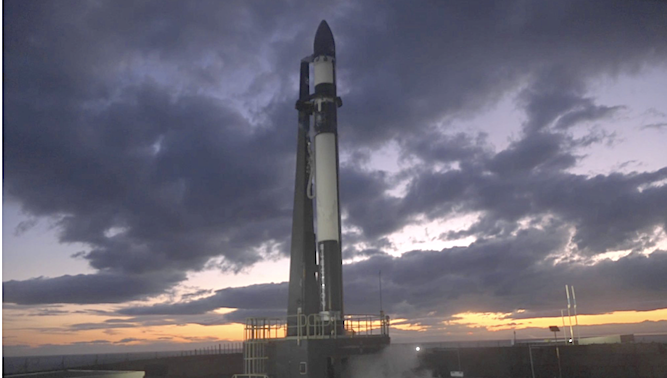
If all proceeds as planned a Rocket Lab Electron booster will launch four satellites into orbit Friday, August 16, at 8:57 a.m. EDT (1257 GMT) from Rocket Lab’s launch site on the Mahia Peninsula in New Zealand, where the local time at liftoff will be 12:57 a.m. on Saturday. The event will be available live online.

Rocket Lab’s Electron rocket stands at Launch Complex 1 on Mahia Peninsula in New Zealand during a countdown dress rehearsal ahead of the “Look Ma, No Hands” mission. Credit: Rocket Lab
Rocket Lab CEO Peter Becksaid in a Twitter update, referring to the company’s Launch Complex 1 that this will be another beautiful night launch at LC-1! Should be visible for miles as it ascends to orbit against the night sky.
Mission Overview:
Rocket Lab’s eighth mission will lift-off in August from Launch Complex 1 in New Zealand, carrying a total of four satellites aboard an Electron launch vehicle.
The mission is manifested with satellites destined to begin a new constellation for UNSEENLABS, as well as more rideshare payloads for Spaceflight, consisting of a spacecraft for BlackSky and the United States Air Force Space Command.
The mission is manifested with a CubeSat that will form the cornerstone of a new maritime surveillance constellation for French company UNSEENLABS. The constellation aims to deliver precise, reliable, and secure maritime data, enabling organizations to monitor their own vessels and observe those that present risks, such as pirates and illegal vessels.
Mission management and rideshare aggregator, Spaceflight, also manifested three satellites on its second rideshare mission with Rocket Lab. Among the rideshare payloads is BlackSky’s Global-4 Earth-imaging satellite. The satellite will join BlackSky Global-3, which was launched to low Earth orbit on an Electron vehicle in June 2019. BlackSky’s constellation delivers rapid-revisit satellite imagery to assist with monitoring economic activity such as crop development and herd migration, or surveying damage following natural disasters.
The final spacecraft manifested on the mission are two experimental satellites for the United States Air Force Space Command, designed to test new technologies including propulsion, power, communications, and drag capabilities for potential applications on future spacecraft.

